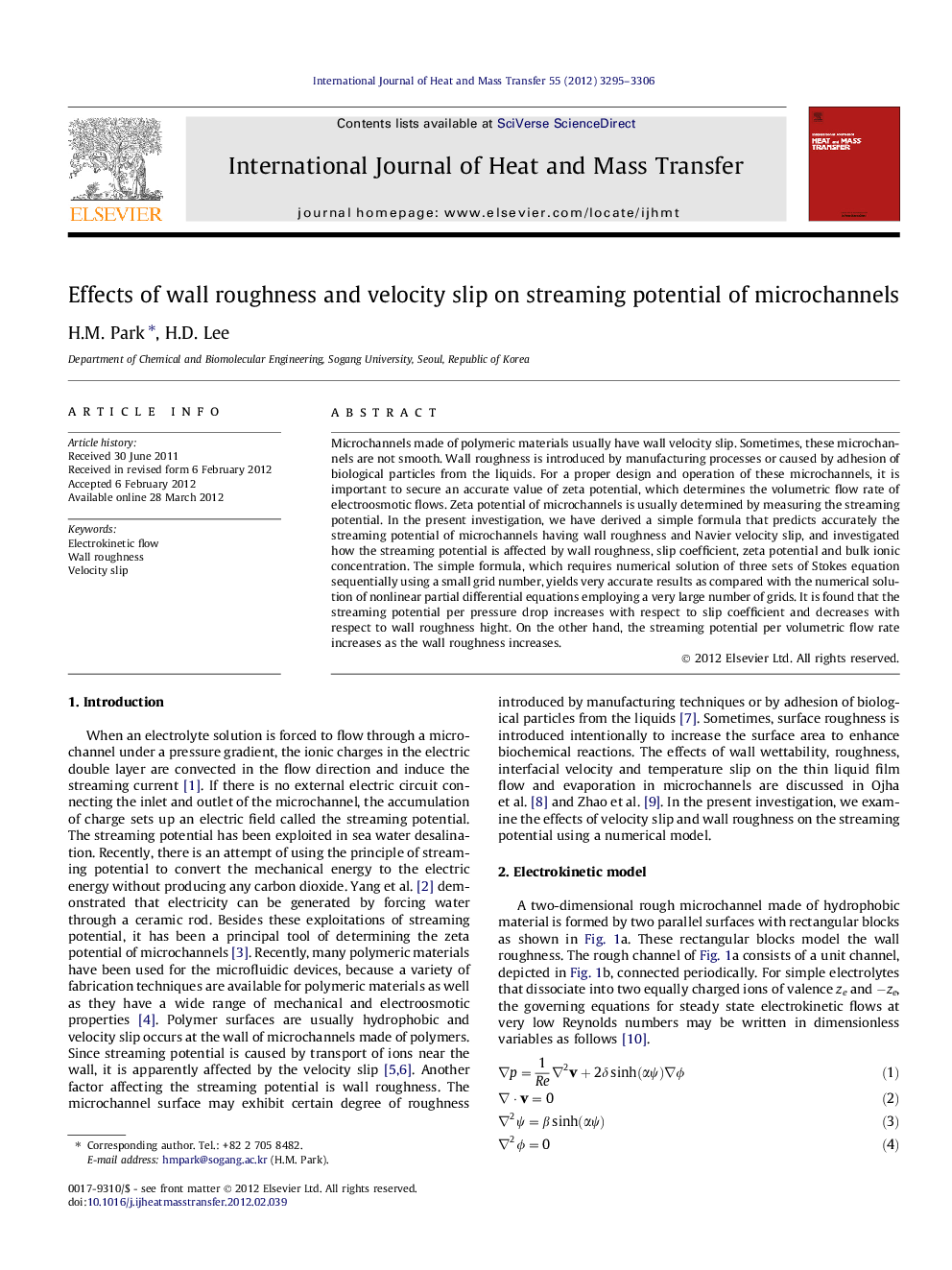| Article ID | Journal | Published Year | Pages | File Type |
|---|---|---|---|---|
| 659508 | International Journal of Heat and Mass Transfer | 2012 | 12 Pages |
Abstract
Microchannels made of polymeric materials usually have wall velocity slip. Sometimes, these microchannels are not smooth. Wall roughness is introduced by manufacturing processes or caused by adhesion of biological particles from the liquids. For a proper design and operation of these microchannels, it is important to secure an accurate value of zeta potential, which determines the volumetric flow rate of electroosmotic flows. Zeta potential of microchannels is usually determined by measuring the streaming potential. In the present investigation, we have derived a simple formula that predicts accurately the streaming potential of microchannels having wall roughness and Navier velocity slip, and investigated how the streaming potential is affected by wall roughness, slip coefficient, zeta potential and bulk ionic concentration. The simple formula, which requires numerical solution of three sets of Stokes equation sequentially using a small grid number, yields very accurate results as compared with the numerical solution of nonlinear partial differential equations employing a very large number of grids. It is found that the streaming potential per pressure drop increases with respect to slip coefficient and decreases with respect to wall roughness hight. On the other hand, the streaming potential per volumetric flow rate increases as the wall roughness increases.
Related Topics
Physical Sciences and Engineering
Chemical Engineering
Fluid Flow and Transfer Processes
Authors
H.M. Park, H.D. Lee,
